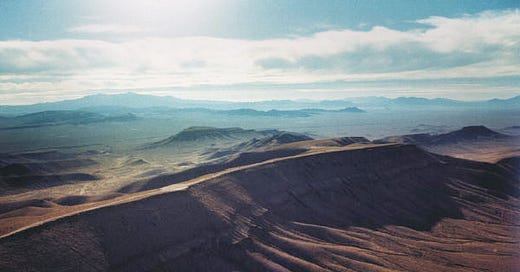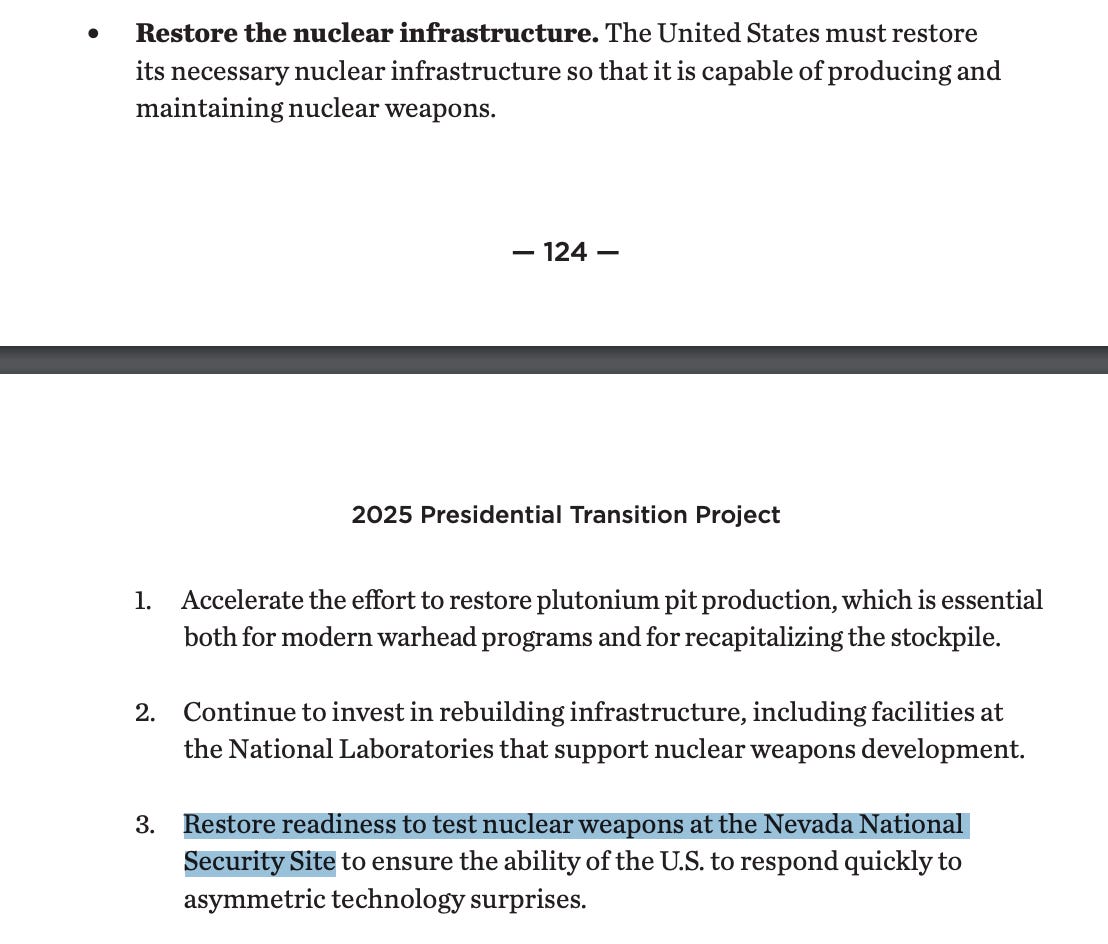Welcome to Western Water Notes.
Thanks to everyone who has subscribed recently and followed this newsletter. All my posts are free, with the full archives open to paid subscribers. But if you are able to and want to support my work further, paid subscribers go a long way in helping me reach a more sustainable place and invest more time in this project. Right now, I’m 23 paid subscribers away from my goal for where I was hoping to be by the start of February.
Also: There are plenty of other ways you can support this work, like sharing on the social media of your choice—or with friends, frenemies and colleagues alike!
I don’t know about you, but this week has felt like an exhausting sprint. Looking forward to recharging a little over the weekend. As always, don’t hesitate to reach out with comments, feedback or ideas. My email is here, and it’s probably the best place to reach me these days.
Over the past year, every time I’ve seen a story in the news about growing demand and growing interest in deploying nuclear energy, I’ve thought about Yucca Mountain.
Yucca Mountain is a proposed (and partially built) nuclear waste repository on federal land. At Yucca—on the edge of the Great Basin and just east of the Amargosa Desert—the nation would transport its nuclear waste to Nevada and store it in deep, cavernous underground tunnels within doubled-sealed containers within a geologic tomb
The Yucca project is well known in Nevada—and by well known, I mean hated.
Since the 1980s, Nevada—a state that shouldered a disproportionate cost of testing in the nuclear age—has raised concerns about the safety of transporting nuclear waste in the state, national security risks, and environmental hazards at the site, including the potential long-term effects on groundwater. Don’t just take it from me. “The state's official position,” writes the attorney general, “is that Yucca Mountain is a singularly bad site to house the nation's high-level nuclear waste and spent nuclear fuel….”
Opposition to the project has historically united Nevada politicians across party lines, and forged surprising coalitions among groups that otherwise might disagree on most issues. For outsiders looking to “win” in Nevada (i.e. presidential candidates), even an inch of support for Yucca was seen a political sin. In 2020, after Trump put funding for Yucca in his budget proposals during his first years in office, there was an election in which Nevada was a swing state for the president, and Trump signaled a reversal.
Now Trump is president again, and he is implementing a playbook known as Project 2025, elevating its architect to run the office charged with overseeing the U.S. budget.
That playbook calls on the Dept. of Energy to “restart the Yucca Mountain licensing process,” in addition to finding another repository site. While it does not commit to making Yucca the permanent resting ground for our nuclear waste, it paves the way.
And the new Energy Secretary, who served on the board of a company that is engaged in building small nuclear power reactors to meet growing demand, is not ruling it out.
Last week, the always insightful John L. Smith published a column worth reading in full at The Nevada Independent. In it, he talked to former Nevada governor and senator Richard Bryan, a who has opposed putting waste at Yucca since the 1980s and said:
“The president has adopted virtually every policy statement found in Project 2025,” Bryan says. “The 2025 report includes provisions to reactivate the licensing process to locate high-level nuclear waste at Yucca Mountain. I think it’s a new threat to Nevadans and I hope that we can continue to marshal the opposition that has been bipartisan in Nevada since my time as governor in the 1980s….
Yucca Mountain has a somewhat tortured and complex history. It was kickstarted in a 1987 law known as the “Screw Nevada Bill.” Since then, the U.S. Treasury has poured billions into studying the geology, groundwater and feasibility of Yucca without ever bringing the project online. It has defied party lines at times. After he was Interior Secretary under the Clinton administration, Bruce Babbitt endorsed Yucca as a “safe, solid geologic repository” when the Bush administration was considering it. Babbitt’s remark prompted the fury of then-Republican Sen. John Ensign, who said ”I’ve been saying all along there are 31 states that want to cram nuclear waste down our throat.”
Then Yucca was put on hold in the Obama years. Now Yucca could be back, and in an administration that has shown it cares less about community consent or congressional approval—one of the successful strategies deployed in opposing Yucca in past years.
Yucca has been called the most studied real estate in America. Three decades since it was proposed, the costs of putting a nuclear waste site inside a mountain at the edge of a Great Basin are still in question. Meanwhile, the U.S. has a serious waste issue.
Experts have pointed out flaws at the Yucca site and urged the U.S. to move on from Yucca, exploring other options for storing nuclear waste as new projects come online.
But the economic and political winds seem to be coming now with much more force, not only because of the election of Trump but also because of demand for nuclear energy to meet as a base-load resource to meet renewable energy goals and support power-hungry AI data centers. Both trends mean Yucca is likely back on the table.
The larger Atomic West story
An outsider might view Nevada as refusing to store nuclear waste in its backyard—I’ve heard the term NIMBY used. Not only does this not recognize the reality that no state wants to store nuclear waste (part of the initial site selection issue) but it fails to understand the history and legacy of the “Atomic West.” The Western U.S. in general and Nevada in particular came to be a training and development ground for much of the U.S. after the Trinity Test in New Mexico proved the power of the atomic bomb.
Between 1951 and 1992, the U.S. government conducted 100 aboveground and 828 underground nuclear tests at the Nevada Test Site, which is on Western Shoshone land under the Treaty of Ruby Valley. Throughout their testing, these detonations were the subject of outcry and protest that included Indigenous leaders, activists and international groups. Some of these same groups have continued to oppose Yucca’s siting, engaging in coalitions that have included environmentalists, politicians, and rural communities. Their rallying cry around Yucca: Nevada is Not a Wasteland
The impacts of these tests are still being studied and felt.
Last year, the Bulletin of the Atomic Scientists published an article looking at the lasting environmental impacts of aboveground and underground atomic testing. And Jan. 27 marked a national remembrance day for downwinders, concentrated in rural and tribal lands in the West, “who paid a high price for the development of a nuclear program for the benefit of the United States.” The next day, a bipartisan group of senators introduced a bill to reauthorize compensation funding for downwinders.
If you read Project 2025, testing in Nevada is something to watch too. One of its policy recommendations, tucked into the Defense section, reads the following:
Restore readiness to test nuclear weapons at the Nevada National Security Site…
🔎 A few other tabs to keep an eye on
Fast-growing St. George’s search for water turns to reuse.
After a series of storms this week, California reservoirs are filling up.
The 9th Circuit will hear a case that involves the legal separation of surface water and groundwater on the Gila River. More from Courthouse News.
Local fallout from the unwanted California releases, from SJV News.
Are more dams in California coming down? See: Eel River.
DOGE is targeting NOAA, the agency responsible for public weather reports. The agency costs taxpayers about $3/year and generates billions in economic returns, as climate scientist Daniel Swain helpfully pointed out on Bluesky.









Decades ago, I spent a month in a geology field camp mapping the Johnnie Formation in Panamint Range just outside Death Valley. One of my graduate advisors was on the technical advisory committee for Yucca Mountain and we were able to tour the site--including the large corkscrew tunnel meant to be the actual repository. I recall a number of reasons this site and the studies were questionable: * Scientists were given a very limited time window to evaluate the geology of the tunnel before the walls were cemented over for stability, meaning that there was no way to replicate studies if outstanding questions persisted. * The regulations require that a site be capable of safely housing nuclear waster for 10,000 years. No one can predict what geologic and climatological changes (i.e., more rain, perhaps) will occur between now and then. * There is a line of cinder cones trending toward the tunnel, the closest of which happens the be the oldest, and therefore most statistically likely to erupt.
Revisiting this site and ramping up nuclear is all about providing for the outsized power demands of cooling centers for AI and the other endeavors of the tech bros.